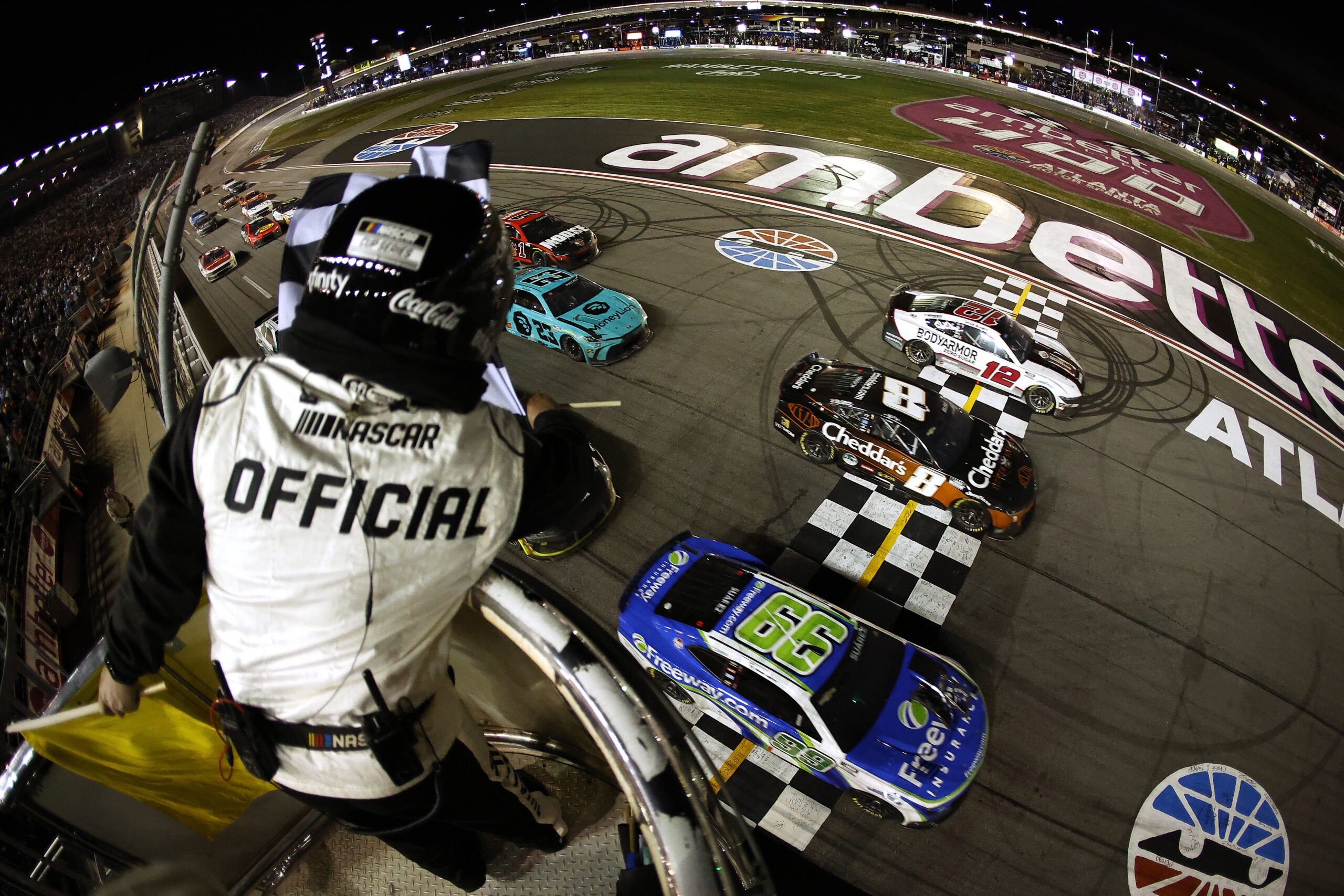
In the Next-Gen era, the term “parity” has been thrown around quite a bit due to how close together the field is. How drastic has the change been? What exactly do we mean by saying there is “more parity” in the Next-Gen era?
The definition of parity according to Merriam-Webster is, “The quality or state of being equal of equivalent”. While the Next-Gen cars are not exactly equal, they are incredibly close together.
Look at how many winners the Next-Gen car has produced. 2022 saw 19 unique winners, while 2023 had 15. No driver has won more than 6 races in a season in the Next-Gen era.
Compare that to a year like 2021, which saw 16 different winners, but, Kyle Larson won 10 races. Look at 2018 as well which saw only 12 different winners, and Kyle Busch, Kevin Harvick, and Martin Truex Jr. combined to snag 22 of 36 (61%) race wins that season.
This can also be seen by how close the field is together during the race. During the Richmond race, for example, all 36 cars finished on track, and the last place car was only 3 laps down at the end of the race. Compare that to the 2018 Overton’s 400 at Chicagoland Speedway, a track twice the size of Richmond, where, at the end of stage one, many of the backmarkers were already 3 or more laps down.
The margin of victory is another factor to consider. At Phoenix the past March, Christopher Bell won the race by 5.465 seconds, a record margin of victory for the Next-Gen era. Dover Motor Speedway, a track the same size as Phoenix, had a margin of victories 2+ seconds longer in back-to-back seasons (2018 and 2019).
All that to say the Next-Gen car has brought the field closer together. However, the best teams are still winning races and Championships. From 2000-2021, every NASCAR Cup Series Championship has been won by a current Manufacturer Tier 1, Key Partner team, with 2017 being the lone exception.
In the Next-Gen era, both Championships have been won by a Tier One team, Team Penske. These race teams have also combined for 77 of the 81 race wins in the Next-Gen era. As much as parity has been apparent, the teams with the most resources are still the ones winning races.
Now, parity does bring race teams closer together, but, does it actually hurt the competition? If the field runs closer lap times, that naturally makes it harder to pass. We discuss this at length in the article below.
However, it does give opportunities to smaller teams or newer teams to race up front with the bigger race teams. That being said, statistics show that the big teams are still winning most of the races. Therefore, how much does parity really help the smaller teams?
Regardless, the Next-Gen car has created closer competition than ever before. It has created renowned parity in the NASCAR world.
